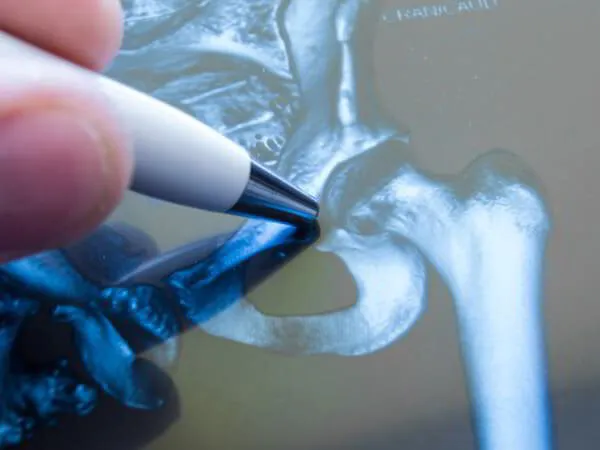Complex Hip Reconstruction Surgery
Home / Area of Specialty / Hip / Complex Hip Reconstruction Surgery
Dr. Pradyumna R carefully evaluate your conditions and symptoms associated to your hip pain and hip injuries, based on the diagnostic report and scan he would suggest if so, you are a candidate for Complex Hip Reconstruction surgery procedure for treating hip structures with complex hip fractures, hurtful hip injuries, hip abnormalities, structural issues, he is highly experienced in hip reconstruction surgeon at Bangalore Orthopaedic Clinic, in BTM Layout, Bangalore.
If you have any queries or would like to schedule an appointment for Complex Hip Reconstruction surgery procedure or Complex Joint Reconstruction or traumatic hip injuries or hip pain treatment consultation, please call +919113025188.
What is Complex Hip Reconstruction Surgery?
Complex hip reconstruction surgery is a surgical procedure for treating hip structures with complex hip fractures, hurtful hip injuries, hip abnormalities, structural issues, and damage from diseases. There are multiple types of complex hip reconstruction surgery and its suitability will be decided by your surgeon based on multiple factors.
What are the Risk factors, signs, and warnings for Complex Hip Reconstruction Surgery?
The hip joint is a complicated structure consisting of bone, cartilage, ligaments, muscle, and lubricating fluid. Thus, the symptoms of a hip disorder will greatly differ depending on the cause of the disorder and its impact. A few symptoms and Risk factors in a hip disorder include:
Symptoms:
- Hip pain
- Limping
- Reduced movement in the hip joint
- Referred Pain like leg ache
- Muscle Stiffness
- Knee pain.
Risk factors:
- Disorders like osteoarthritis, developmental dysplasia, Perthes disease, irritable hip syndrome, soft tissue pain and referred pain, and slipped capital femoral epiphysis may be associated with the mentioned symptoms.
- Conditions like Post-traumatic arthritis of the hip joints and traumatic hip injury or hip fractures can also have signs of severe pain, limiting your daily activities (such as walking, bending, getting up from a chair, or climbing stairs).
- Moderate to severe pain even while resting that affects sleep
- Stiffness in the hip due to joint degeneration, limiting movement
- Failure of conservative treatments to alleviate hip symptoms
- Congenital deformities, complex fractures, and complex injuries affect more than one structural component of the joint.
Tests and Diagnosis for Complex Hip Reconstruction Surgery
Diagnosing the hip damage is very crucial for an appropriate treatment plan and your physician may suggest or conduct the following:
- Diagnosis is made by evaluating your symptoms, diseases or disorders, medical history, and physical examination. Additionally, imaging tests may be needed to confirm the diagnosis.
- Common imaging tests used to diagnose hip disorders are X-ray, ultrasound, bone scan, MRI scan, or arthrogram.
- Bone biopsy: Your surgeon may choose to do a bone biopsy to check for abnormalities in the bone. During this procedure, a surgeon will use a needle to take a small sample of your bone to evaluate the abnormalities in the bone cells.
Complex hip reconstruction surgeries
As the hip is made of many complex structures like ligaments, tendons, muscles, and cartilage to provide multiple functions, and so the treatment of hip issues may require a personalized approach that will include proper diagnosis and a unique treatment plan, depending on the specific problem. It may involve more than one type of treatment and surgery. All the reconstructive surgeries are categorized as complex hip surgeries for restructuring the hip joint rectifying definite problem to relieve pain and giving needed stability and function. They may also include surgeries to reconstruct bones of the hip after removal of a part of the bone to treat bone cancer. They may include:
Open and closed reduction: In this surgery, your surgeon makes an incision on the skin and inserts inner fixators such as wires, screws, pins, or plates either in front or back of the pelvis. On the other hand, in closed reduction, the surgeon places external fixators such as pins or screws into the fractured bone on either side of the pelvis without making any incision. These pins are then connected to clamps or rods outside the skin to form an external frame that brings about stability and allows the bone to heal.
Ilizarov Method: It is a minimally invasive procedure where correction of deformities is done in 3 phases using the circular ring fixator as given below:
- Operative phase: In this phase, K- wires are passed through bones proximal and distal to the deformity and then fixed to the Ilizarov rings using wire fixation bolts. The rings are then connected by hinges and threaded rods.
- Distraction phase: This phase will take place after 10 days of an operative phase where twits or pressure is applied that stimulates the new bone growth. This phase will continue till the deformity is adjusted, then the apparatus is locked.
- Consolidation phase: It is the period between the locking of the apparatus and the completion of solid bone formation. It may take 2-3 months, as the bone becomes solid, and the Ilizarov ring fixations are removed. Then a cast made of plaster of Paris (POP) is placed for a month for protection. The patient can be mobilized initially for partial weight-bearing and is later allowed full weight-bearing.
Metal rod in the femoral canal: Bone metastases in the lower hip area treated with metal rod placement down the central canal of the femur.
Bone implantation: In this procedure, your surgeon will place a healthy bone that is removed from another part of your body and implants into the affected bone. It is done mostly when the disjointed or the lost bone cannot be joined by other surgical methods.
Acetabular and femoral osteotomy: Periacetabular osteotomy is a surgical procedure to treat hip dysplasia. In this procedure, the acetabulum is separated from the pelvic bone and is then repositioned using screws to allow for a better fit of the femoral head in the same acetabulum. Occasionally cutting and repositioning of the femoral head is also required and is done by another surgery called a femoral osteotomy.
Post-operative care after Complex Hip Reconstruction Surgery
In general, postoperative care instructions and recovery after a complex hip reconstruction may involve the following steps.
- You must keep the surgical site clean and dry
- Never cross your legs
- Never bend your hips past a right angle (90°)
- Avoid sitting on low chairs
- Gentle exercises may be done for a few minutes each hour except while sleeping
- Use an elevated toilet seat
- Avoid bending down to pick up things
- Avoid combined movement of bending your hip and turning your foot inwards
- You will be advised to keep your leg elevated while resting to prevent swelling and pain
- A customized physical therapy protocol will be designed to help strengthen your hip muscles and enhance hip function.
What are the risks and complications?
Complex hip reconstruction surgery is a fairly safe procedure. However, as with any procedure, possible risks and complications may include:
- Blood clots
- Infection
- Bleeding
- Failure to relieve pain
- Injury to nerves and blood vessels
- Implant wear and loosening
- Failure of the graft
- The need for revision surgery
What are the advantages of complex Hip reconstruction surgery?
The complex hip reconstruction surgeries in most cases give freedom from hip pain and stiffness, improve range of motion, restore normal functioning of the hip joint, and improve your quality of life.

